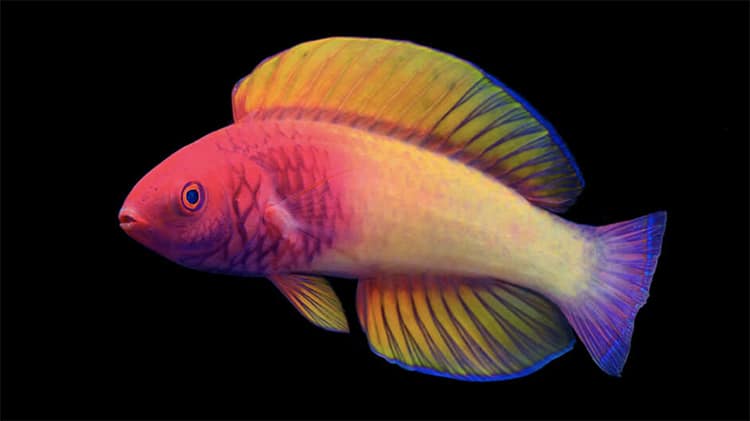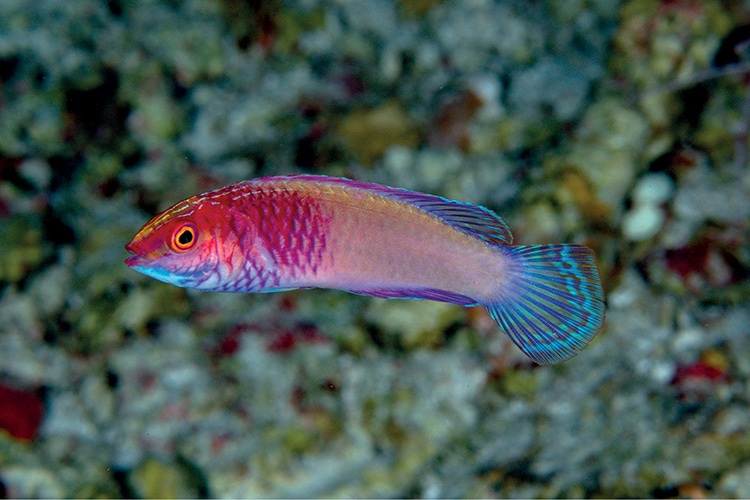Cirrhilabrus finifenmaa, or the Rose-Veiled Fairy Wrasse, a new species.
(Photo:Yi-Kai Tea/California Academy of Sciences)
Untold wonders fill the seas.
In 2022, a new wonder was revealed: anelusive rainbow-colored fishin the waters off the Maldives.

Cirrhilabrus finifenmaa, or the Rose-Veiled Fairy Wrasse, a new species. (Photo:Yi-Kai Tea/California Academy of Sciences)
The rose-veiled fairy wrasseorCirrhilabrus finifenmaadarts along the reefs.
This shift in gender is accompanied by one in the vivid color of its scales.
This special trait is just one example of genderfluidity in nature.

The rose-veiled fairy wrasse off the coast of the Maldives. (Photo:Wikimedia Commons, Public domain)
The rose-veiled fairy wrasse was first sighted in the 1990s by scientist John Ernest Randall.
However, Randall believed the colorful fish was simply another color-changing species at a different age.
It was not until 2022 that the species was scientifically described as distinct.
Finifenmaa means rose in the local Dhivehi language.
It acknowledges the Maldivian national flower, the pink rose.
The rose-veiled fairy wrasse lives about 130230 feet below the surface of the Indian Ocean.
This region is known as the mesophotic, or twilight, zone.
Divers with special breathing systems must descend to spot the brightly colored critters.
Like other wrasse species, the fish are born female; and as they mature, they become males.
They become more decadent and colorful as theychange their gender.
The rose-veiled fairy wrasse off the coast of the Maldives.